Consistency Check of ITACAext, the Flatfile of the Italian Accelerometric Archive
Abstract
1. Introduction
2. Dataset
3. Method
3.1. Residual Analysis
3.2. Detection and Classification of Peculiar Features
4. Results
4.1. Illustrative Cases
4.2. Percentage of Outliers
5. Conclusions
- identifying erroneous event (e.g., magnitude estimates, localization), site (e.g., soil category, VS,30), and record (e.g., wrong acquisition parameters) metadata;
- discarding remaining low quality data;
- identifying physical effects not modeled by the reference GMM (e.g., peculiar site effects, rupture directivity).
Supplementary Materials
Author Contributions
Funding
Institutional Review Board Statement
Informed Consent Statement
Data Availability Statement
Conflicts of Interest
References
- Lanzano, G.; Sgobba, S.; Luzi, L.; Puglia, R.; Pacor, F.; Felicetta, C.; D’Amico, M.; Cotton, F.; Bindi, D. The pan-European Engineering Strong Motion (ESM) flatfile: Compilation criteria and data statistics. Bull. Earthq. Eng. 2019, 17, 561–582. [Google Scholar] [CrossRef]
- Lanzano, G.; Sgobba, S.; Luzi, L.; Pacor, F.; Puglia, R.; Felicetta, C.; D’Amico, M. The pan-European engineering strong motion (ESM) flatfile: Comparison with NGA-West2 database. BGTA-Boll. Geofis. Teor. Appl. 2020, 61, 343–356. [Google Scholar] [CrossRef]
- Strollo, A.; Cambaz, D.; Clinton, J.; Danecek, P.; Evangelidis, C.P.; Marmureanu, A.; Ottemöller, L.; Pedersen, H.; Sleeman, R.; Stammler, K.; et al. EIDA: The European integrated data archive and service infrastructure within ORFEUS. Seismol. Res. Lett. 2021, 92, 1788–1795. [Google Scholar] [CrossRef]
- Hearne, M.; Thompson, E.M.; Schovanec, H.; Rekoske, J.; Aagaard, B.T.; Worden, C.B. USGS automated ground motion processing software. USGS Softw. Release 2019. [Google Scholar] [CrossRef]
- Aur, K.A.; Bobeck, J.; Alberti, A.; Kay, P. Pycheron: A Python-Based Seismic Waveform Data Quality Control Software Package. Seismol. Res. Lett. 2021, 92, 3165–3178. [Google Scholar] [CrossRef]
- Zaccarelli, R.; Bindi, D.; Strollo, A. Anomaly detection in seismic data–metadata using simple machine-learning models. Seismol. Res. Lett. 2021, 92, 2627–2639. [Google Scholar] [CrossRef]
- Massa, M.; Scafidi, D.; Mascandola, C.; Lorenzetti, A. Introducing ISMDq—A Web Portal for Real-Time Quality Monitoring of Italian Strong-Motion Data. Seismol. Res. Lett. 2022, 93, 241–256. [Google Scholar] [CrossRef]
- Bommer, J.J.; Abrahamson, N.A. Why do modern probabilistic seismic hazard analyses lead to increased hazard estimates? Bull. Seismol. Soc. Am. 2006, 96, 1967–1977. [Google Scholar] [CrossRef]
- Rodriguez-Marek, A.; Rathje, E.M.; Bommer, J.J.; Scherbaum, F.; Stafford, P.J. Application of single-station sigma and site-response characterization in a probabilistic seismic-hazard analysis for a new nuclear site. Bull. Seismol. Soc. Am. 2014, 104, 1601–1619. [Google Scholar] [CrossRef]
- Bindi, D.; Luzi, L.; Pacor, F. Interevent and Interstation Variability Computed for the Italian Accelerometric Archive (ITACA). Bull. Seismol. Soc. Am. 2009, 99, 4. [Google Scholar] [CrossRef]
- Luzi, L.; Hailemikael, S.; Bindi, D.; Pacor, F.; Mele, F.; Sabetta, F. ITACA (ITalian ACcelerometric Archive): A web portal for the dissemination of the Italian strong motion data. Seismol. Res. Lett. 2008, 79, 716–722. [Google Scholar] [CrossRef]
- Russo, E.; Felicetta, C.; D’Amico, M.; Sgobba, S.; Lanzano, G.; Mascandola, C.; Pacor, F.; Luzi, L. Italian Accelerometric Archive v3.2; Istituto Nazionale di Geofisica e Vulcanologia, Dipartimento della Protezione Civile Nazionale: Milano, Italy, 2022. [Google Scholar] [CrossRef]
- Rodriguez-Marek, A.; Montalva, G.A.; Cotton, F.; Bonilla, F. Analysis of single-station standard deviation using the KiK-net data. Bull. Seismol. Soc. Am. 2011, 101, 1242–1258. [Google Scholar] [CrossRef]
- Luzi, L.; Bindi, D.; Puglia, R.; Pacor, F.; Oth, A. Single-station sigma for Italian strong-motion stations. Bull. Seismol. Soc. Am. 2014, 104, 467–483. [Google Scholar] [CrossRef]
- Lanzano, G.; D’Amico, M.; Felicetta, C.; Luzi, L.; Puglia, R. Update of the single-station sigma analysis for the Italian strong-motion stations. Bull. Earth. Eng. 2017, 15, 2411–2428. [Google Scholar] [CrossRef]
- Sgobba, S.; Lanzano, G.; Pacor, F. Empirical nonergodic shaking scenarios based on spatial correlation models: An application to central Italy. Earthq. Eng. Struct. Dyn. 2021, 50, 60–80. [Google Scholar] [CrossRef]
- Bindi, D.; Luzi, L.; Pacor, F.; Paolucci, R. Identification of accelerometric stations in ITACA with distinctive features in their seismic response. Bull. Earth. Eng. 2011, 9, 1921–1939. [Google Scholar] [CrossRef][Green Version]
- Pilz, M.; Cotton, F. Does the one-dimensional assumption hold for site response analysis? A study of seismic site responses and implication for ground motion assessment using KiK-Net strong-motion data. Earthq. Spectra 2019, 35, 883–905. [Google Scholar] [CrossRef]
- Pilz, M.; Cotton, F.; Kotha, S.R. Data-driven and machine learning identification of seismic reference stations in Europe. Geoph. Journ. Intern. 2020, 222, 861–873. [Google Scholar] [CrossRef]
- Lanzano, G.; Felicetta, C.; Pacor, F.; Spallarossa, D.; Traversa, P. Methodology to identify the reference rock sites in regions of medium-to-high seismicity: An application in Central Italy. Geoph. Journ. Intern. 2020, 222, 2053–2067. [Google Scholar] [CrossRef]
- Kotha, S.R.; Weatherill, G.; Bindi, D.; Cotton, F. A regionally-adaptable ground-motion model for shallow crustal earthquakes in Europe. Bull. Earth. Eng. 2020, 18, 4091–4125. [Google Scholar] [CrossRef]
- Bindi, D.; Kotha, S.R.; Weatherill, G.; Lanzano, G.; Luzi, L.; Cotton, F. The pan-European engineering strong motion (ESM) flatfile: Consistency check via residual analysis. Bull. Earth. Eng. 2019, 17, 583–602. [Google Scholar] [CrossRef]
- Traversa, P.; Maufroy, E.; Hollender, F.; Perron, V.; Bremaud, V.; Shible, H.; Drouet, S.; Guéguen, P.; Langlais, M.; Wolyniec, D.; et al. RESIF RAP and RLBP dataset of earthquake ground motion in mainland France. Seismol. Res. Lett. 2020, 91, 2409–2424. [Google Scholar] [CrossRef]
- Brunelli, G.; Lanzano, G.; D’Amico, M.C.; Felicetta, C.; Luzi, L.; Mascandola, C.; Pacor, F.; Russo, E.; Sgobba, S. ITACAext Flatfile [Data Set]; Istituto Nazionale di Geofisica e Vulcanologia: Milano, Italy, 2022. [Google Scholar] [CrossRef]
- Lanzano, G.; Luzi, L.; Pacor, F.; Felicetta, C.; Puglia, R.; Sgobba, S.; D’Amico, M. A Revised Ground-Motion Prediction Model for Shallow Crustal Earthquakes in Italy. Bull. Seismol. Soc. Am. 2019, 109, 525–540. [Google Scholar] [CrossRef]
- Paolucci, R.; Pacor, F.; Puglia, R.; Ameri, G.; Cauzzi, C.; Massa, M. Record processing in ITACA, the new Italian strong-motion database. In Earthquake Data in Engineering Seismology; Springer: Dordrecht, The Netherlands, 2011; pp. 99–113. [Google Scholar]
- Trifunac, M.D.; Lee, V.W. A note on the accuracy of computed ground displacements from strong-motion accelerograms. Bull. Seismol. Soc. Am. 1974, 64, 1209–1219. [Google Scholar] [CrossRef]
- Graizer, V. Strong motion recordings and residual displacements: What are we actually recording in strong motion seismology? Seismol. Res. Lett. 2010, 81, 635–639. [Google Scholar] [CrossRef]
- Woessner, J.; Danciu, L.; Giardini, D.; Crowley, H.; Cotton, F.; Grünthal, G.; Valensise, G.; Arvidsson, R.; Basili, R.; Demircioglu, M.N.; et al. The 2013 European seismic hazard model: Key components and results. Bull. Earth. Eng. 2015, 13, 3553–3596. [Google Scholar] [CrossRef]
- CEN; Eurocode. 8—Design of STRUCTURES for Earthquake Resistance—Part 1: General Rules, Seismic Actions and Rules for Building; Br. Stand. Institute: London, UK, 2004. [Google Scholar]
- Wald, D.J.; Allen, T.I. Topographic slope as a proxy for seismic site conditions and amplification. Bull. Seismol. Soc. Am. 2007, 97, 1379–1395. [Google Scholar] [CrossRef]
- Boore, D.M. Orientation-Independent, Nongeometric-Mean Measures of Seismic Intensity from Two Horizontal Components of Motion. Bull. Seismol. Soc. Am. 2010, 100, 1830–1835. [Google Scholar] [CrossRef]
- Boore, D.M.; Atkinson, G.M. Ground-motion prediction equations for the average horizontal component of PGA, PGV, and 5%-damped PSA at spectral periods between 0.01 s and 10.0 s. Earthq. Spectra 2008, 24, 99–138. [Google Scholar] [CrossRef]
- Al-Atik, L.; Abrahamson, N.A.; Bommer, J.J.; Scherbaum, F.; Cotton, F.; Kuehn, N. The variability of ground-motion prediction models and its components. Seismol. Res. Lett. 2010, 81, 794–801. [Google Scholar] [CrossRef]
- Bates, D.; Mächler, M.; Bolker, B.; Walker, S. Fitting linear mixed-effects models using lme4. arXiv 2014, arXiv:1406.5823. [Google Scholar]
- Ktenidou, O.J.; Roumelioti, Z.; Abrahamson, N.; Cotton, F.; Pitilakis, K.; Hollender, F. Understanding single-station ground motion variability and uncertainty (sigma): Lessons learnt from EUROSEISTEST. Bull. Earth. Eng. 2018, 16, 2311–2336. [Google Scholar] [CrossRef]
- Luzi, L.; Pacor, F.; Ameri, G.; Puglia, R.; Burrato, P.; Massa, M.; Augliera, P.; Franceschina, G.; Lovati, S.; Castro, R. Overview on the strong-motion data recorded during the May–June 2012 Emilia seismic sequence. Seismol. Res. Lett. 2013, 84, 629–644. [Google Scholar] [CrossRef]
- Moretti, M.; Abruzzese, L.; Zeid, N.A.; Augliera, P.; Azzara, R.A.; Barnaba, C.; Benedetti, L.; Bono, A.; Bordoni, P.; Boxberger, T.; et al. Rapid response to the earthquake emergency of May 2012 in the Po Plain, northern Italy. Ann. Geoph. 2012, 55, 4. [Google Scholar] [CrossRef]
- Abraham, J.R.; Lai, C.G.; Papageorgiou, A. Basin-effects observed during the 2012 Emilia earthquake sequence in Northern Italy. Soil Dyn. Earthq. Engin. 2015, 78, 230–242. [Google Scholar] [CrossRef]
- Paolucci, R.; Mazzieri, I.; Smerzini, C. Anatomy of strong ground motion: Near-source records and three-dimensional physics-based numerical simulations of the Mw 6.0 2012 May 29 Po Plain earthquake, Italy. Geophl. J. Int. 2015, 203, 2001–2020. [Google Scholar] [CrossRef]
- Lanzano, G.; Felicetta, C.; Pacor, F.; Spallarossa, D.; Traversa, P. Generic-To-Reference Rock Scaling Factors for Seismic Ground Motion in Italy. Bull. Seismol. Soc. Am. 2022, 112, 1583–1606. [Google Scholar] [CrossRef]
- Bragato, P.L.; Sugan, M.; Augliera, P.; Massa, M.; Vuan, A.; Saraò, A. Moho reflection effects in the Po Plain (northern Italy) observed from instrumental and intensity data. Bull. Seismol. Soc. Am. 2011, 101, 2142–2152. [Google Scholar] [CrossRef]
- Lanzano, G.; D’Amico, M.; Felicetta, C.; Puglia, R.; Luzi, L.; Pacor, F.; Bindi, D. Ground-motion prediction equations for region-specific probabilistic seismic-hazard analysis. Bull. Seismol. Soc. Am. 2016, 106, 73–92. [Google Scholar] [CrossRef]
- Anderson, J.G. Earthquake Seismology-physical processes that control strong ground motion. In Treatise on Geophysics, 2nd ed.; Elsevier: Amsterdam, The Netherlands, 2007. [Google Scholar]
- Ben-Menahem, A. Radiation of seismic surface waves from finite moving sources. Bull. Seismol. Soc. Am. 1961, 51, 401–435. [Google Scholar] [CrossRef]
- Boatwright, J. The persistence of directivity in small earthquakes. Bull. Seismol. Soc. Am. 2007, 97, 1850–1861. [Google Scholar] [CrossRef]
- Joyner, W. Directivity for non-uniform ruptures. Bull. Seismol. Soc. Am. 1991, 81, 1391–1395. [Google Scholar] [CrossRef]
- Colavitti, L.; Lanzano, G.; Sgobba, S.; Pacor, F.; Gallovič, F. Empirical Evidence of Frequency-Dependent Directivity Effects from Small-to-Moderate Normal Fault Earthquakes in Central Italy. Solid Earth. 2022, 127, e2021JB023498. [Google Scholar] [CrossRef]
- Luzi, L.; Lanzano, G.; Felicetta, C.; D’Amico, M.C.; Russo, E.; Sgobba, S.; Pacor, F.; ORFEUS Working Group 5. Engineering Strong Motion Database (ESM) (Version 2.0); Istituto Nazionale di Geofisica e Vulcanologia (INGV): Milano, Italy, 2020. [Google Scholar] [CrossRef]
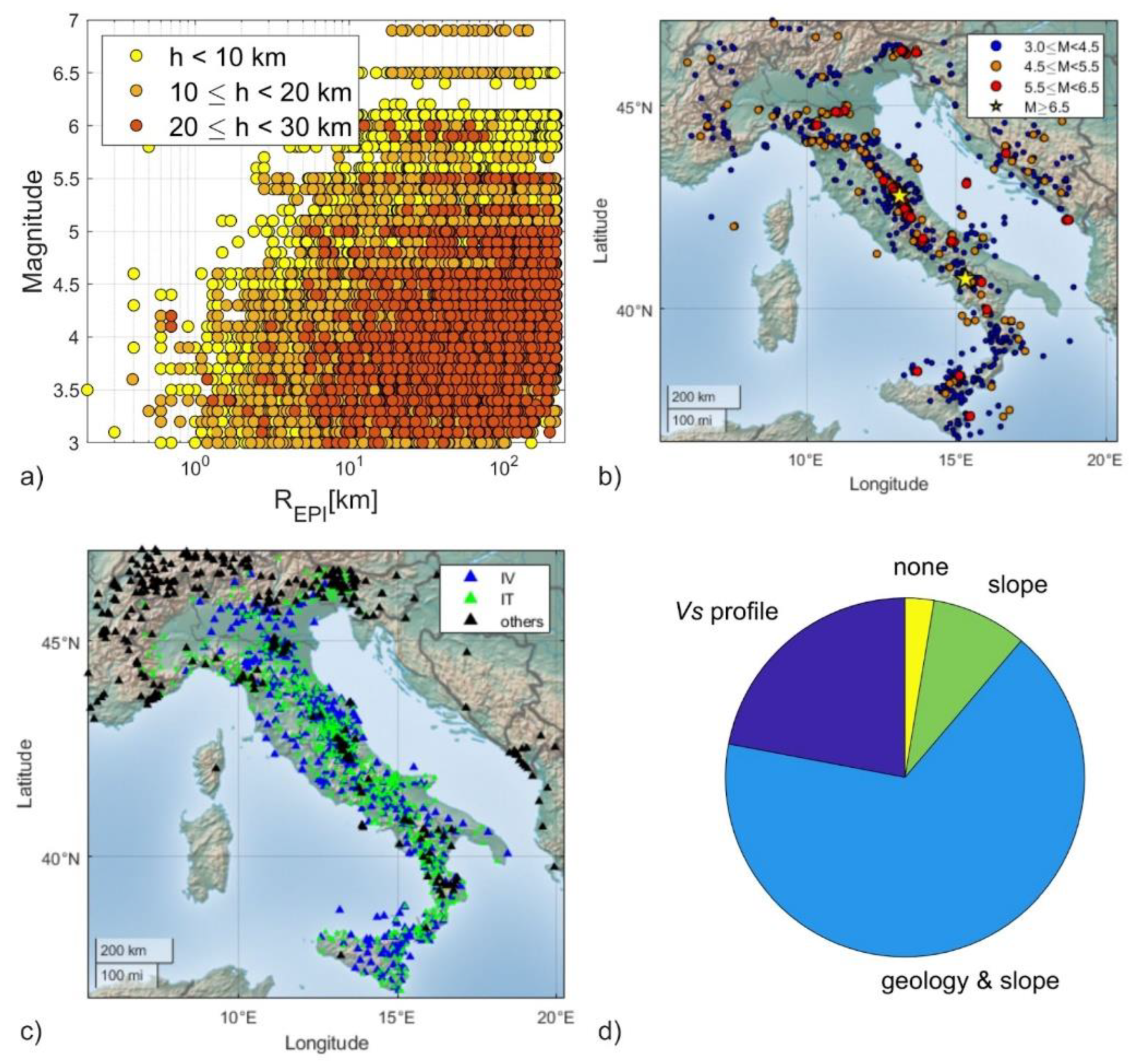

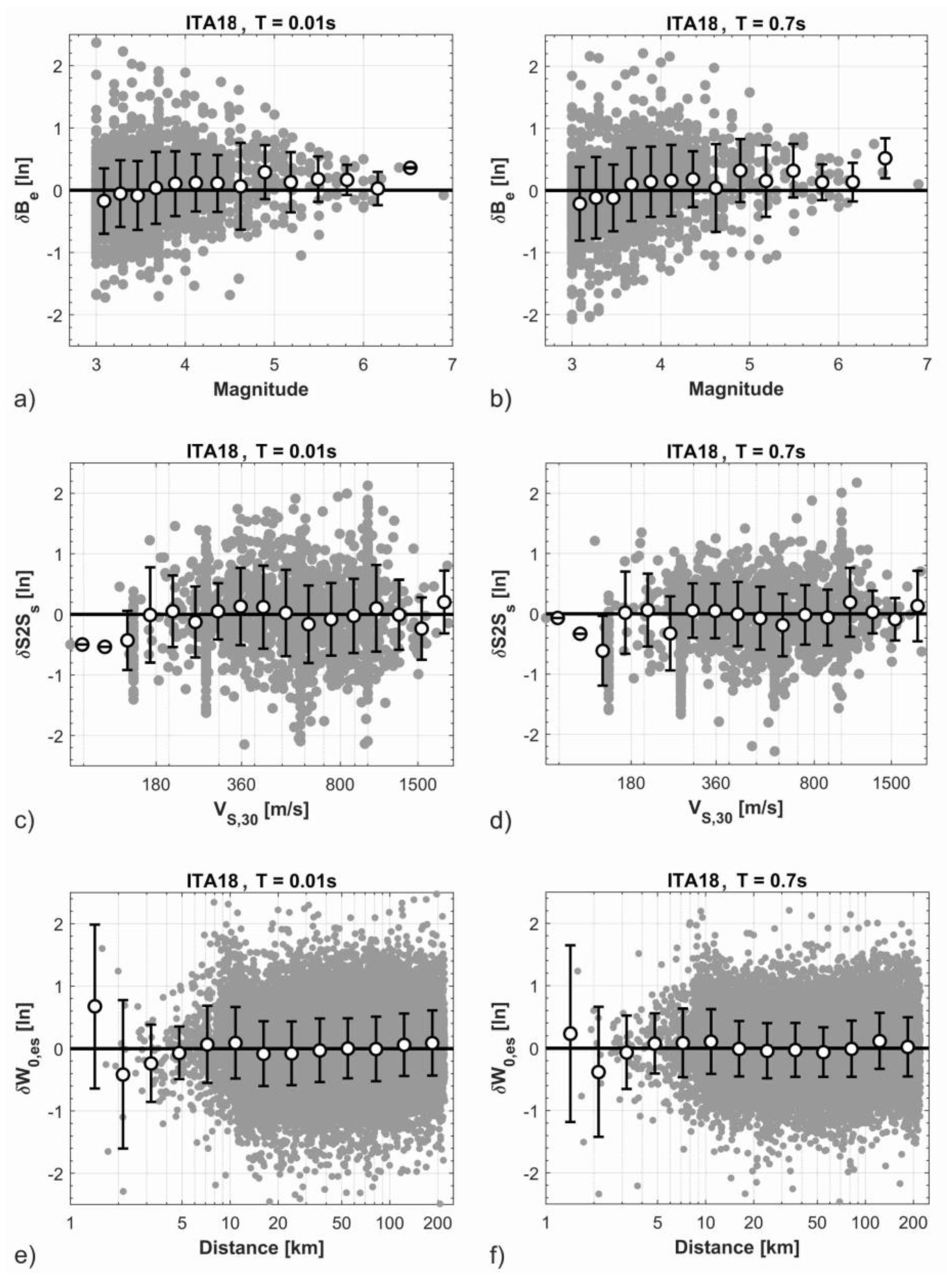

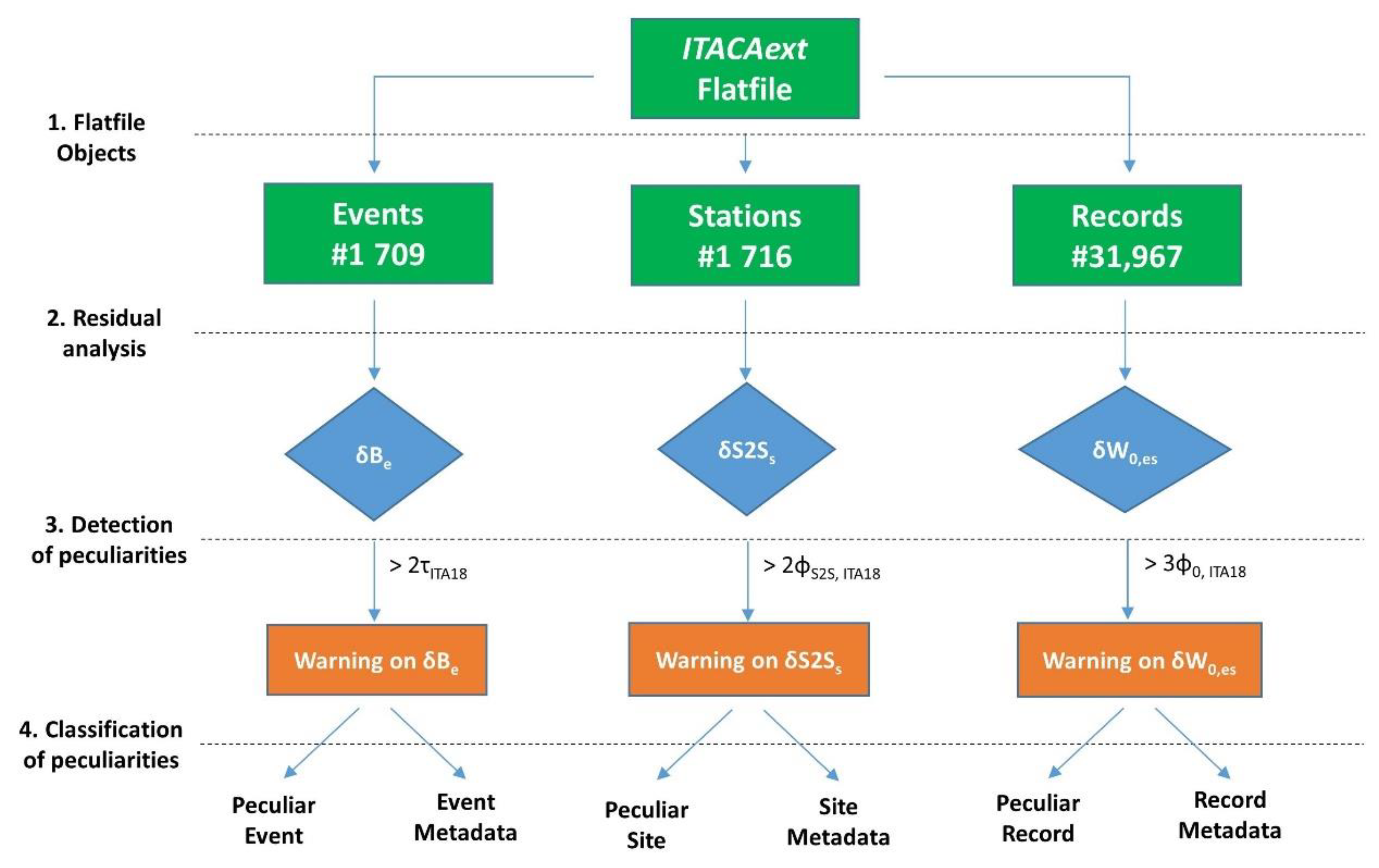
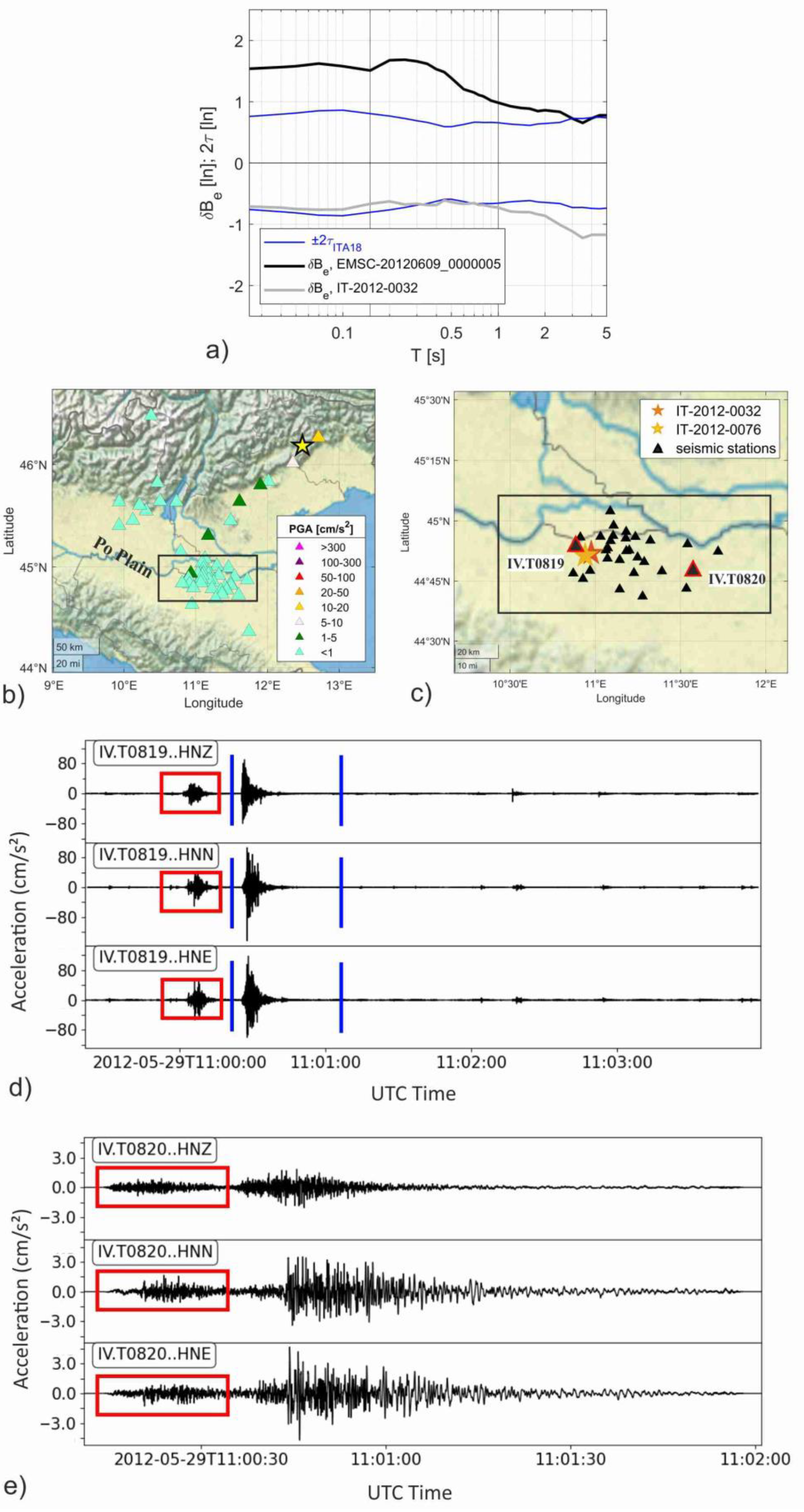
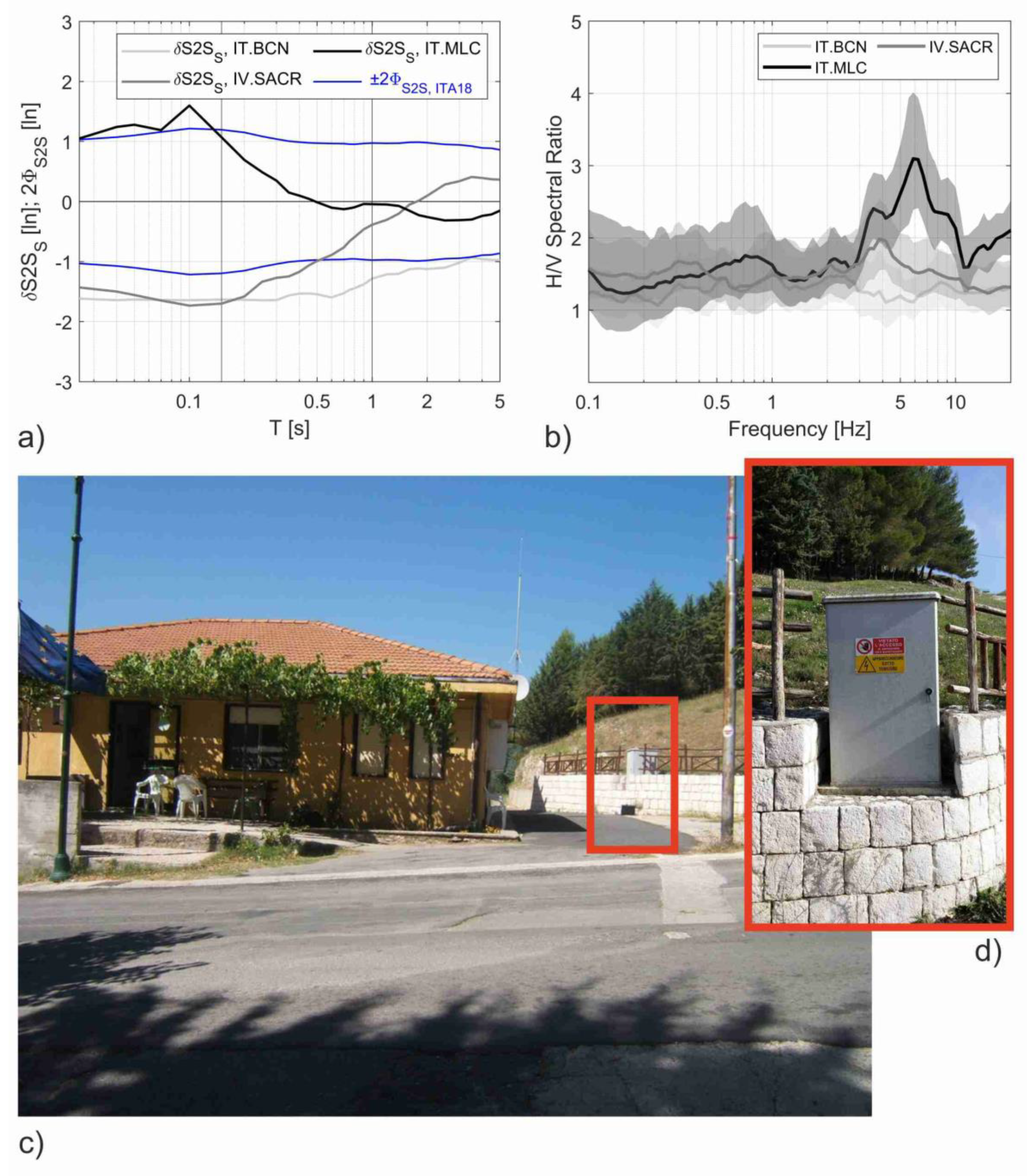

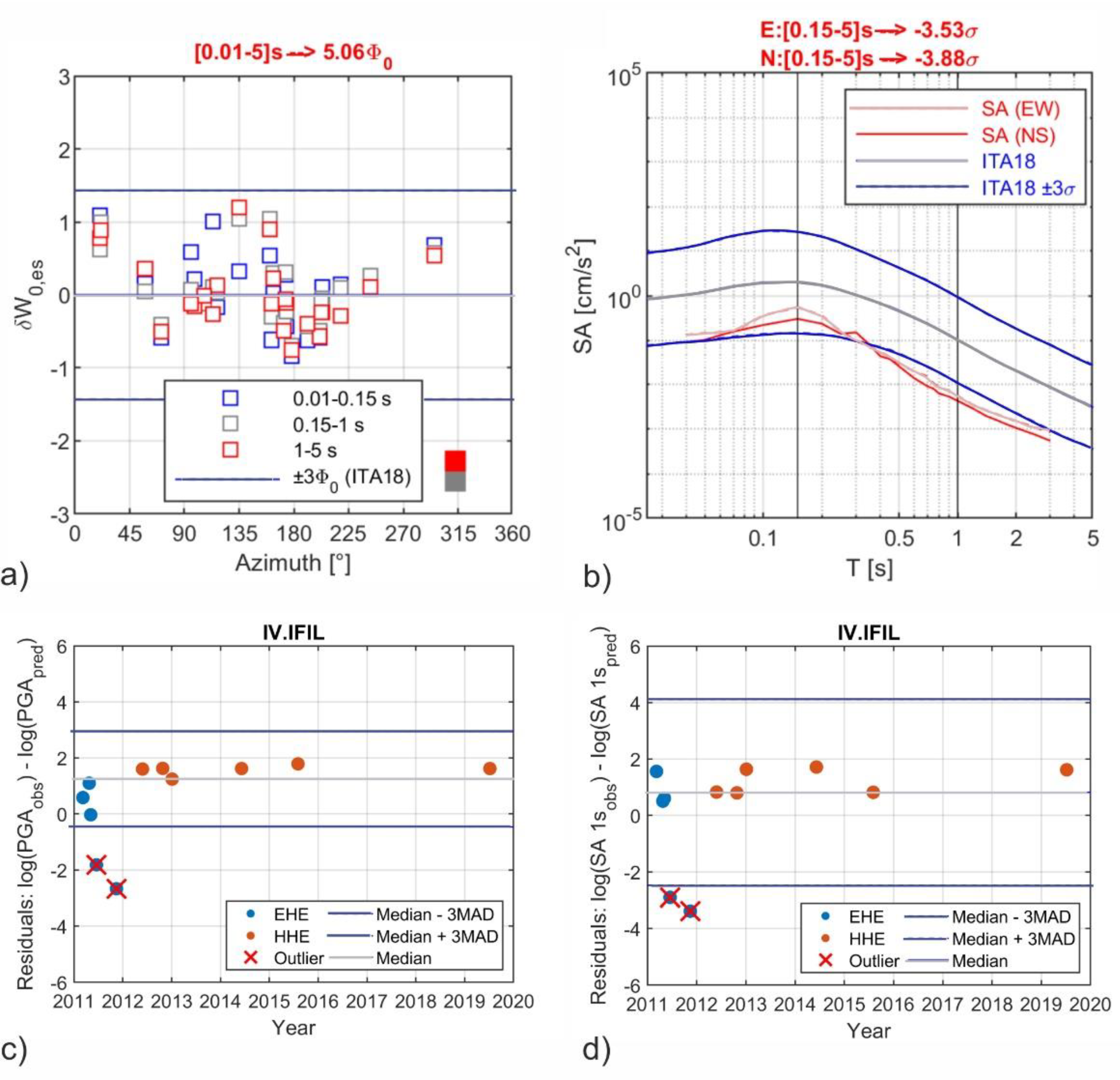

| Definition | Residual Component | Standard Deviation |
|---|---|---|
| Total | ||
| Between-event | ||
| Site-to-site | ||
| Event- and site-corrected | ||
| Event- and site-corrected at single-site |
| Records |
|---|
| FR.ESCA_EMSC-20140912_0000057 |
| FR.ESCA_EMSC-20150411_0000019 |
| FR.ESCA_EMSC-20151106_0000016 |
| FR.ESCA_EMSC-20160623_0000055 |
| FR.ESCA_EMSC-20160730_0000088 |
| FR.REVF_IT-2012-0043 |
| FR.REVF_IT-2012-0045 |
| FR.REVF_IT-2012-0047 |
| FR.REVF_IT-2012-0079 |
| FR.REVF_IT-2012-0087 |
| IV.IFIL_IT-2011-0056 |
| IV.IFIL_IT-2011-0097 |
| NI.DST2_EMSC-20190922_0000076 |
| NI.DST2_EMSC-20191001_0000131 |
Publisher’s Note: MDPI stays neutral with regard to jurisdictional claims in published maps and institutional affiliations. |
© 2022 by the authors. Licensee MDPI, Basel, Switzerland. This article is an open access article distributed under the terms and conditions of the Creative Commons Attribution (CC BY) license (https://creativecommons.org/licenses/by/4.0/).
Share and Cite
Mascandola, C.; Lanzano, G.; Pacor, F. Consistency Check of ITACAext, the Flatfile of the Italian Accelerometric Archive. Geosciences 2022, 12, 334. https://doi.org/10.3390/geosciences12090334
Mascandola C, Lanzano G, Pacor F. Consistency Check of ITACAext, the Flatfile of the Italian Accelerometric Archive. Geosciences. 2022; 12(9):334. https://doi.org/10.3390/geosciences12090334
Chicago/Turabian StyleMascandola, Claudia, Giovanni Lanzano, and Francesca Pacor. 2022. "Consistency Check of ITACAext, the Flatfile of the Italian Accelerometric Archive" Geosciences 12, no. 9: 334. https://doi.org/10.3390/geosciences12090334
APA StyleMascandola, C., Lanzano, G., & Pacor, F. (2022). Consistency Check of ITACAext, the Flatfile of the Italian Accelerometric Archive. Geosciences, 12(9), 334. https://doi.org/10.3390/geosciences12090334








